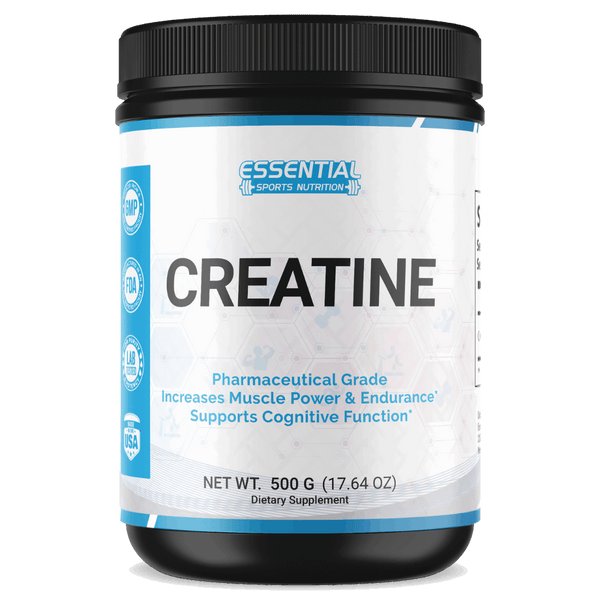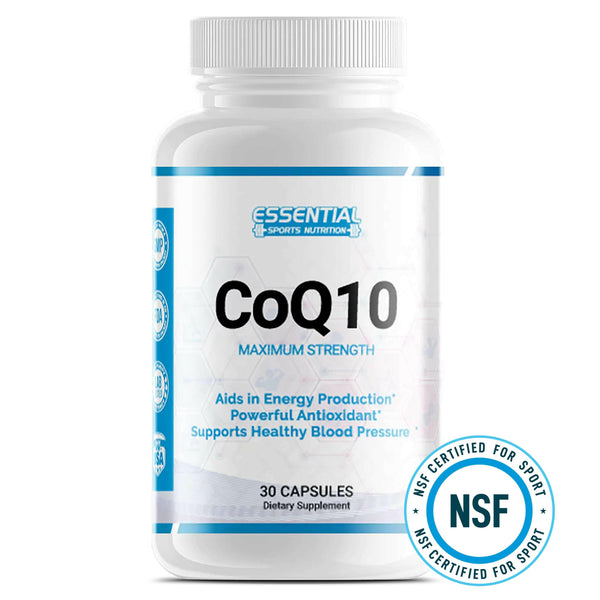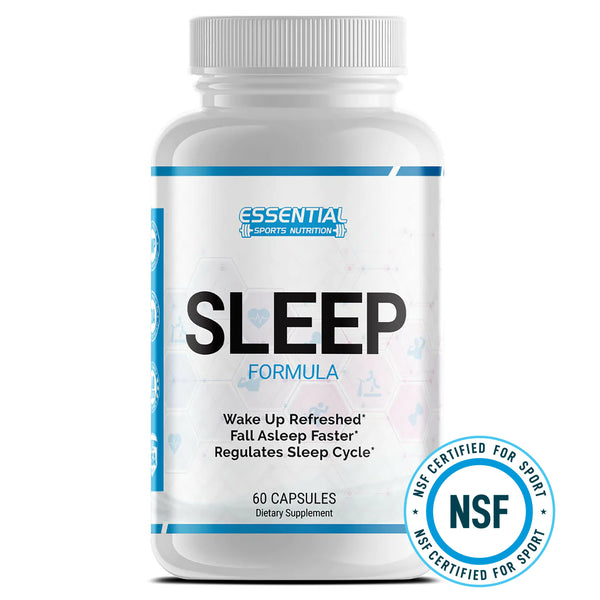Optimizing Daily Intake: RDA for Vitamins in Adults
Many adults struggle to get the right amount of vitamins and minerals in their daily diet. Whether you're feeling tired, dealing with frequent infections, or facing other health issues, an imbalance in vitamin intake might be the culprit.
The Recommended Dietary Allowance (RDA) helps guide how much of each vitamin you need for optimal health. It's a good way to make sure you're getting enough nutrients without going overboard.
This article will explain what RDAs are, why they matter, and how you can use them to improve your health. You'll learn about key vitamins like A, C, D, E, K, and B-complex vitamins along with their recommended amounts for adults.
Read on to balance your nutrient intake effectively!
Key Takeaways
- RDAs help guide the daily intake of vitamins for adult men and women to stay healthy.
- Vitamin A supports vision, while Vitamin C strengthens the immune system. Men need 900 mcg of Vitamin A and 90 mg of Vitamin C daily; women need 700 mcg and 75 mg respectively.
- B-complex vitamins play key roles in energy production, brain function, and cell metabolism. For example, adults require different amounts like Thiamine at around 1.2 mg for men and 1.1 mg for women per day.
- Consuming too much of certain vitamins can be harmful. Fat-soluble vitamins such as A, E, and K can accumulate in the body leading to toxicity if taken excessively.
- Not meeting RDA guidelines may cause fatigue or severe health problems like scurvy from lack of vitamin C or osteoporosis from insufficient vitamin D intake.
Understanding Recommended Dietary Allowances (RDA)
Recommended Dietary Allowances (RDA) tell us how much of each vitamin we should have daily. Experts set these levels to help meet the nutritional needs of most healthy adults.
Definition and Purpose
Recommended Dietary Allowances (RDA) give guidelines for how much of each vitamin adults need daily. The RDA aims to meet the nutritional needs of nearly all healthy people in different age groups, including pregnant women.
These values help ensure you get enough vitamins and minerals to stay healthy.
Experts from the Food and Nutrition Board determine RDAs by studying scientific data on nutrient requirements across many populations. They also consider acceptable macronutrient distribution ranges to find safe intake levels for vitamins and elements.
RDAs can prevent deficiencies while promoting good health through balanced dietary intake or supplements when necessary.
How RDAs are Determined

Experts consider current scientific research, nutritional surveys, and clinical trials. They analyze the needs of different age groups and genders. This helps to set amounts needed to maintain good health.
The Institute of Medicine develops RDAs as part of Dietary Reference Intakes (DRIs). These values include Estimated Average Requirement (EAR), Adequate Intake (AI), and Tolerable Upper Intake Level (UL).
The process ensures most people get enough nutrients without risking an overdose.
Key Vitamins and Their RDA Values for Adults

Different vitamins have specific daily requirements for adults. Vitamin A helps with vision, and Vitamin C boosts your immune system.
https://www.youtube.com/watch?v=wY4vEBilWN4
Examples of Vitamins A, C, D, E, and K

A balanced diet is essential to meet daily vitamin needs. Here's a look at the RDAs for key vitamins in adults:
| Vitamin | RDA (Men) | RDA (Women) | Sources |
|---|---|---|---|
| Vitamin A | 900 mcg | 700 mcg | Carrots, Sweet Potatoes, Spinach |
| Vitamin C | 90 mg | 75 mg | Oranges, Strawberries, Broccoli |
| Vitamin D | 15 mcg | 15 mcg | Sunlight, Fatty Fish, Fortified Milk |
| Vitamin E | 15 mg | 15 mg | Almonds, Sunflower Seeds, Spinach |
| Vitamin K | 120 mcg | 90 mcg | Kale, Brussels Sprouts, Green Beans |
Fat-soluble vitamins A, E, and K can accumulate in the body and become toxic at high doses. Supplements should fill nutritional gaps in a balanced diet and not be the sole source of vitamins.
B-Complex Vitamins and Their RDAs
 B-Complex vitamins are essential for energy, brain function, and cell metabolism. Each B vitamin has a specific role and recommended dietary allowance (RDA). Below is a table outlining the RDAs for adults.
B-Complex vitamins are essential for energy, brain function, and cell metabolism. Each B vitamin has a specific role and recommended dietary allowance (RDA). Below is a table outlining the RDAs for adults.
| Vitamin | RDA for Men (mg/day) | RDA for Women (mg/day) |
|---|---|---|
| Vitamin B1 (Thiamine) | 1.2 | 1.1 |
| Vitamin B2 (Riboflavin) | 1.3 | 1.1 |
| Vitamin B3 (Niacin) | 16 | 14 |
| Vitamin B5 (Pantothenic Acid) | 5 | 5 |
| Vitamin B6 (Pyridoxine) | 1.3-1.7 | 1.2-1.5 |
| Vitamin B7 (Biotin) | 30 mcg | 30 mcg |
| Vitamin B9 (Folate) | 400 mcg | 400 mcg |
| Vitamin B12 (Cobalamin) | 2.4 mcg | 2.4 mcg |
Vitamin B1 (Thiamine) helps convert nutrients to energy. Vitamin B2 (Riboflavin) supports skin health. Vitamin B3 (Niacin) aids in DNA repair. Vitamin B5 (Pantothenic Acid) is crucial for hormone production. Vitamin B6 (Pyridoxine) assists in amino acid metabolism. Vitamin B7 (Biotin) plays a role in fat metabolism. Vitamin B9 (Folate) is vital for cell growth. Vitamin B12 (Cobalamin) aids in red blood cell formation.
High doses of these vitamins can be harmful. It is important to avoid exceeding the upper limit. The USDA FoodData Central provides detailed information on the nutrient content of foods.
Impact of Not Meeting RDA Guidelines

You may feel tired and weak if you don't get enough vitamins. Your body can develop serious health problems without a balanced intake of essential nutrients.
https://www.youtube.com/watch?v=wI2lyNBO9wE
Potential Health Risks

Iron and selenium can be risky at high doses. Too much iron can cause liver damage, while excess selenium may lead to hair loss and nerve issues. The Upper Limit (UL) considers both food and supplements.
Most vitamin bottles don’t list the UL, RDA, or DV set by the government. This increases the risk of taking too many vitamins through dietary supplements. Always check your daily intake to avoid health problems like toxicity or nutrient deficiencies.
Importance of Balanced Vitamin Intake
Eating a balanced amount of vitamins is crucial for good health. Vitamins like A, C, D, E, and K help your body function properly. For example, vitamin D helps your bones stay strong by aiding calcium absorption.
Lack of vitamins can lead to serious health issues. Not getting enough vitamin C can cause scurvy. Deficiency in vitamin D could lead to rickets or osteoporosis. Make sure you eat fruits and vegetables to get these essential nutrients every day.
Conclusion

A balanced diet is key to getting the nutrients you need. Pay attention to your RDA values for vitamins and minerals. This helps maintain good health. Overdosing on supplements can cause problems, so be careful with high doses.
Use nutrition labels to guide your choices. A well-balanced diet combined with proper supplementation fills any gaps in your intake. Take charge of your health today!
FAQs
Q: What is the recommended daily intake (RDA) for vitamins in adults?
A: The RDA tells how much of each vitamin and mineral you need every day to stay healthy.
Q: Why are vitamins and minerals important?
A: Vitamins and minerals help your body work well, prevent deficiency, and avoid toxicity from high doses.
Q: How can I meet my nutritional requirements?
A: You can get the nutrients you need by eating whole grains, vegetables, nuts, legumes, and fortified foods like cereal.
Q: Should I take a multivitamin if I eat a balanced diet?
A: If your diet meets your nutrient requirements nearly all the time, you may not need extra supplements unless advised by medical experts.
Q: Can too many vitamins be harmful?
A: Yes! High doses of certain vitamins can cause health problems like bleeding or prehypertension; always follow recommendations for dietary intake levels.
Q: Do different people need different amounts of vitamins?
A: Yes! Your age, health condition such as pregnancy or disease status influence how much vitamin or mineral you might require daily.
Q: What are dietary reference intakes (DRIs) and how are they relevant to the recommended intake of vitamins for adults?
A: DRIs are a set of reference values used to plan and assess the nutrient intake of healthy individuals. They include the Recommended Dietary Allowance (RDA), which indicates the average daily level of intake sufficient to meet the nutrient requirements of nearly all healthy individuals. RDAs are specific to different age groups and genders.
Q: How can I ensure that I am meeting the recommended intake of essential vitamins and minerals in my daily diet?
A: You can ensure you are meeting the recommended intake by consuming a variety of nutrient-rich foods, including fruits, vegetables, whole grains, lean proteins, and dairy products. Additionally, consider checking the Nutrition Facts label on packaged foods to monitor your intake of specific nutrients.
Q: What is the significance of the Daily Value listed on food labels in relation to vitamins and minerals?
A: The Daily Value represents the percentage of a specific nutrient in a serving of the product, based on a standard daily diet of 2000 calories. It helps consumers understand the nutritional content of the food and make informed choices about their dietary intake.
Q: Should I take vitamin supplements to ensure I meet my daily nutrient requirements?
A: If you have a balanced diet that includes a variety of nutrient-rich foods, supplements may not be necessary. However, in some cases, such as certain nutrient deficiencies or specific medical conditions, healthcare providers may recommend supplements to meet your individual needs.
Q: What are the potential health effects of consuming high doses of vitamins or minerals through supplements?
A: Consuming high doses of certain vitamins or minerals can lead to toxicity and adverse health effects. It is important to follow the recommended intakes and not exceed the upper limits established by health authorities to prevent the risk of toxicity.
Q: How can I determine if I am deficient in a specific vitamin or mineral?
A: If you suspect a deficiency, consult with a healthcare provider who can perform tests to evaluate your nutrient levels. Symptoms of deficiencies may include fatigue, weakness, brittle nails, hair loss, and specific health conditions related to each nutrient.
Q: What role do folate and folic acid play in meeting daily nutrient requirements for adults?
A: Folate and folic acid are crucial B vitamins that support cell growth and development. They are particularly important for pregnant women to prevent birth defects. Including folate-rich foods like leafy greens, legumes, and fortified cereals can help meet the recommended intake.























